Analysis
The Gray Market: Why Art Basel Is Both a Gift and a Curse (and Other Insights)
Our columnist returns from Art Basel with thoughts on the fair's Swiss exceptionalism and its meaning in the art world of 2018.
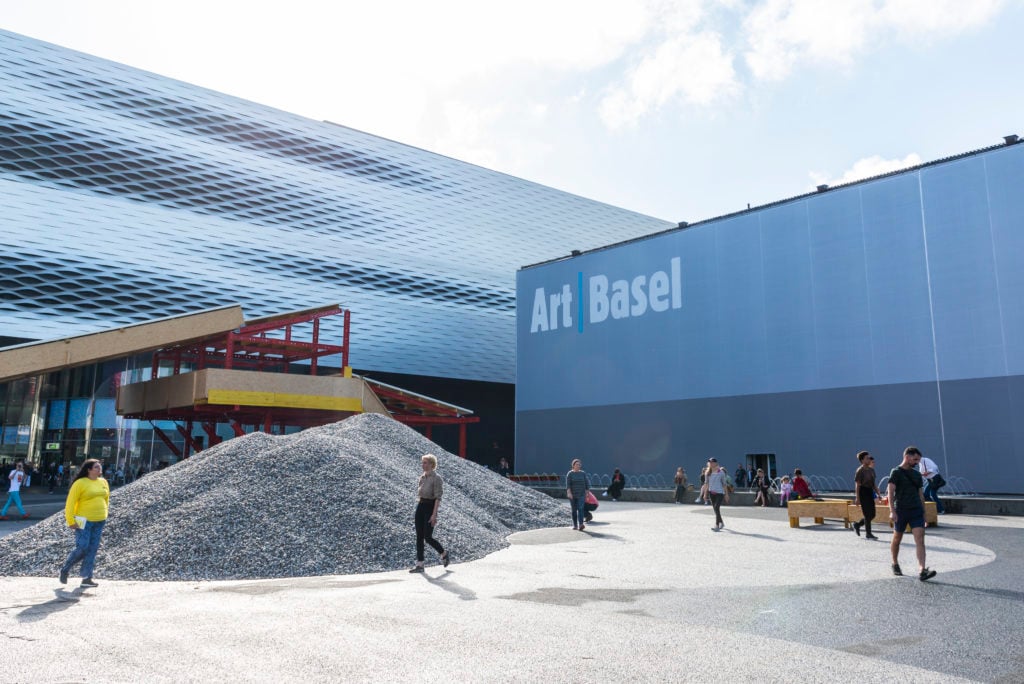
Our columnist returns from Art Basel with thoughts on the fair's Swiss exceptionalism and its meaning in the art world of 2018.

Tim Schneider

Every Monday morning, artnet News brings you The Gray Market. The column decodes important stories from the previous week—and offers unparalleled insight into the inner workings of the art industry in the process.
This week, a reflection on four days at Art Basel 2018….
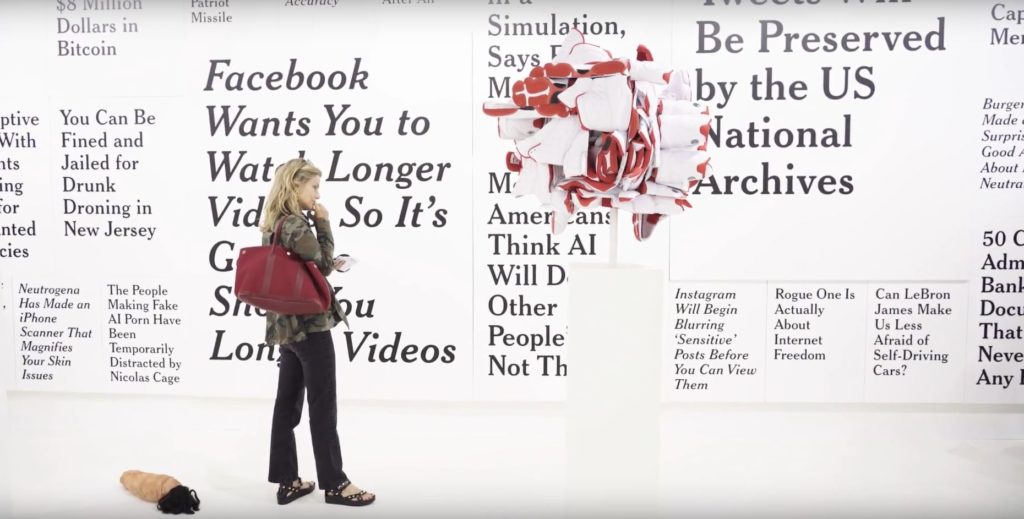
A visitor in front of Ron Terada’s TL; DR (2017–18) at Catriona Jeffries booth in Basel. Image screenshot via Art Basel YouTube.
For years, when the conversation turned toward the experience of art fairs—not their economics, or their structure, or their implications, but the everyday realities of being on the ground at one—I heard the same refrain over and over again from art industry veterans:
“Art Basel is different.”
The “Art Basel” in question in these cases was not the triple-fair brand overall. It was Art Basel in Basel, the mothership event held in the organization’s namesake city every June since 1970.
That Art Basel, I was told, differed on an essential level from every other fair on the increasingly bloated annual calendar of trade shows, even its younger siblings in Hong Kong and Miami Beach.
What I never really heard a clear answer for was why. The people who whispered the magical phrase generally seemed to invoke some ineffable aura of sophistication—a sense that Art Basel found a way to float above the slightly dizzying swamp gas given off by all other fairs.
How, though? No one seemed to be able to articulate it. Art Basel was just… better.
After years of speculation, I finally got my chance to investigate the Art Basel Advantage when the organization invited me to a moderate a panel on blockchain technology in the art industry a few months ago. And ever since I accepted the invitation, I’ve been wondering what I would find.
A few days after returning from Switzerland, I now have a host of new questions, including why the Zürich airport plays ambient audio of farm animals on its intra-terminal shuttle. But I at least have an answer to the operative question.
It turns out that I agree: Art Basel really is different.
But I suspect that it is less different than it used to be—and that the differences that remain speak to a willful, and quietly dangerous, art-industry fantasy in 2018.
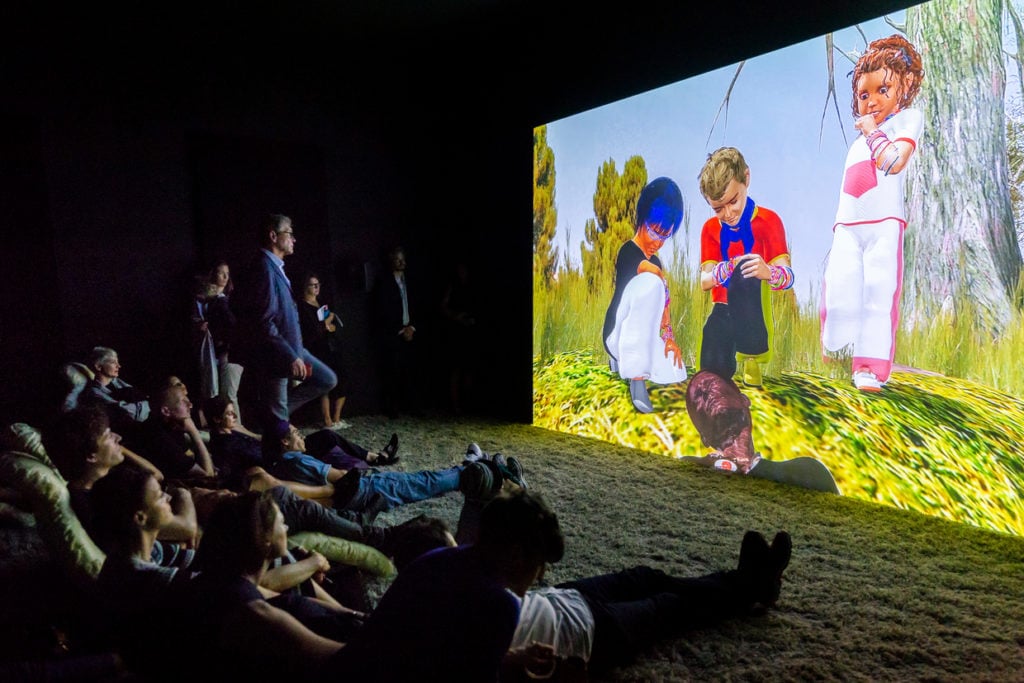
Jon Rafman at Sprüth Magers © Art Basel, 2018.
One remarkable aspect of Art Basel in Basel is that it simultaneously manages to be both the largest of the organization’s fairs and its most refined.
This Swiss edition hosted the most galleries (290) of the past year’s Art Basel troika, and it’s also the only one of the three that includes both a component for super-size indoor installations (Unlimited, which predates Art Basel Hong Kong’s Encounters section) and site-specific outdoor installations (Parcours, which foreshadowed Art Basel Miami Beach’s Public section).
With the city’s slew of elite institutions also syncing up their best exhibitions to fair week, this lineup helps give Art Basel the feeling of a pseudo-biennial—not least because the Parcours installations dot the metropolis, instead of being isolated into a single off-site location. It amps up the gravitas factor and pushes the proceedings out beyond the suffocating confines of a typical convention center.
But a big part of the refinement aspect simply owes to Switzerland itself, which is easily the most tasteful, most efficiently run place I’ve ever visited. My four-day maiden voyage to Basel left me convinced that expecting parents there must get due minutes, not due dates—and that when the time comes, their infants slide out of the womb in tailored outfits with tours of the Beyeler already scheduled.
This lifestyle context elevates every normal art-world interaction into something that feels luxe and, dare I say, even important. I met a dealer for what was effectively carry-out sausage from a convention center’s pop-up food court and it felt like B-roll from the pre-heist scheming portion of a flick in the Ocean’s Eight franchise.
Long story short, I suspect that, outside the fair itself, art business done in Basel approximates the supposed golden age of art dealing, when Leo Castelli was placing future masterpieces with a clientele of connoisseurial aristocrats over champagne lunches on palace verandas, about as well as anyone can hope for in the 21st century.
Mind you, I’m not saying that’s the way it really was back then—at least, not all the time. But I know it’s the image that later generations like my own live with, romanticize about, and would love to emulate at any opportunity.
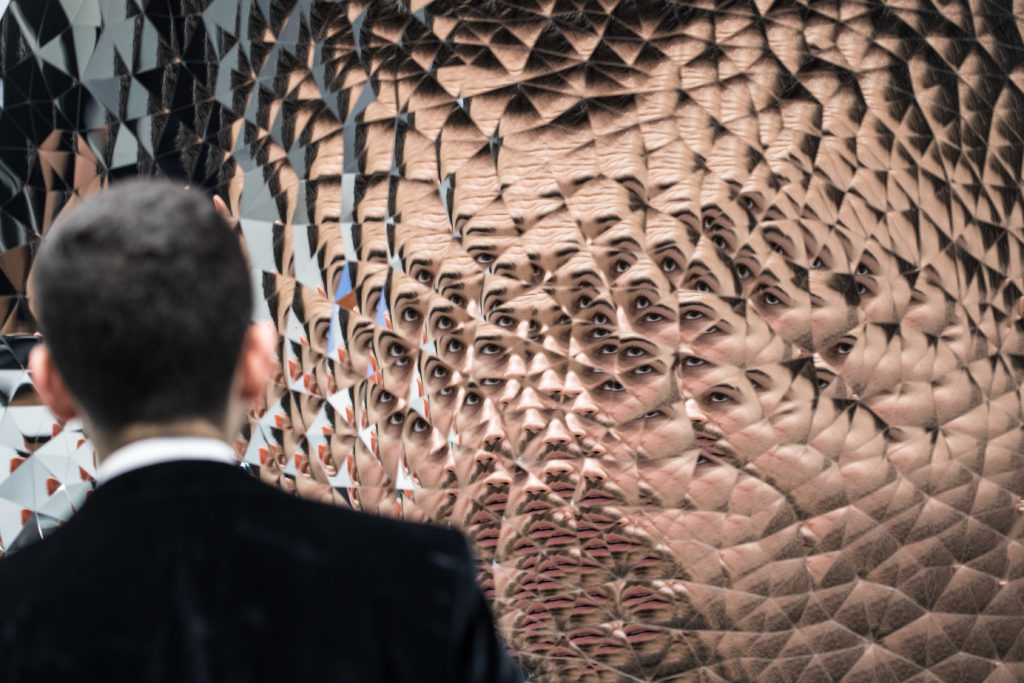
A visitor interacts with Anish Kapoor’s Random Triangle Mirror at Art Basel Hong Kong. Photo: ANTHONY WALLACE/AFP/Getty Images)
Why is it so easy to access this fantasy of bygone times? Because the city of Basel is small and self-selective. You’re not dealing with the native overcrowding of Hong Kong, the sizable tourism component of New York, or the geographical sprawl of London. (It’s also not a party town in the least—like, good luck even finding food past 9:30 p.m.—so the scenesters familiar in Miami aren’t going to make the trip.)
According to tourism website Hello Switzerland, the regular population of Basel is about 170,000 people. This year, attendance at Art Basel in Basel totaled “nearly 95,000,” per the organization’s end-of-fair report.
Some sizable percentage of fair visitors double as residents of the city, obviously. But even if half the attendees were local, it would mean that Basel’s population increased by more than a quarter during the fair. If they all moved in permanently and began voting as a bloc, then the people involved with Art Basel would only need a modest bit more coalition-building to control municipal politics for the foreseeable future.
I tend to be very selective about using the phrase “art world,” because I think it’s often too squishy to be meaningful. But since the people who care about art in some capacity make up the majority of its host city’s population for a week, there may be no more apt time to talk about an “art world” than Art Basel. You’re literally surrounded by it.
This, to me, is what makes Art Basel in Basel different: It’s not just a sophisticated environment for modern and contemporary art. It’s a sophisticated environment for modern and contemporary art that seems to have kicked itself loose of the rest of the earth—an expertly curated moon colony of culture.
The only question is whether or not this is always a good thing for those of us milling around under the dome.
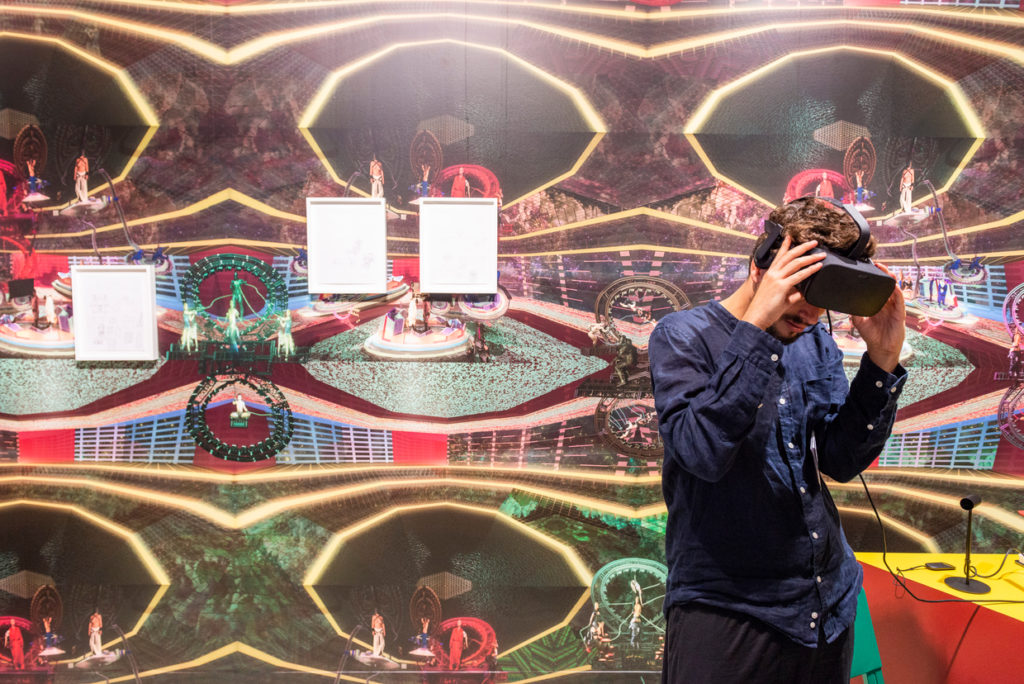
A virtual reality work by Jacolby Satterwhite on view at Morán Morán Gallery. Image © Art Basel.
Not surprisingly, it’s really easy to lose your bearings on anything and everything happening outside of Art Basel during its run.
Great example: Like a lot of other people concerned about the imminent fate of humanity, I’ve been tracking the Donald Trump-Kim Jong Un relationship since the infamous “fire and fury” tweet last August. And somehow, I didn’t even realize that the on-again-off-again summit had actually happened until I was in an airport on the way back to New York on Friday.
Now, admittedly, I go harder at my job than most right-thinking people believe is healthy. Your level of sensory deprivation inside the bubble may vary.
But no matter how deep it goes, the quiet problem with living inside the Art Basel membrane is that the luxury, refinement, and dominance of art and culture there can temporarily convince you that everything in the art world is fine.
Reminder: Everything in the art world is not fine.
To be clear, this fantasia effect is not really Art Basel’s fault. Putting together a robust art program that creates an ideal networking environment for members of the industry is, on some level, their entire professional mandate, and I’m pretty confident they’re not willfully holding the city’s size and demographics in stasis, either.
Nevertheless, a trip to Art Basel clarifies how the haves in this ecosystem can lose touch with the have-nots. Operate in a cocoon of luxury—even a crasser, less refined one than this—for too long, and you naturally start to forget what else is on the other side (especially if you have little incentive to try to find out).
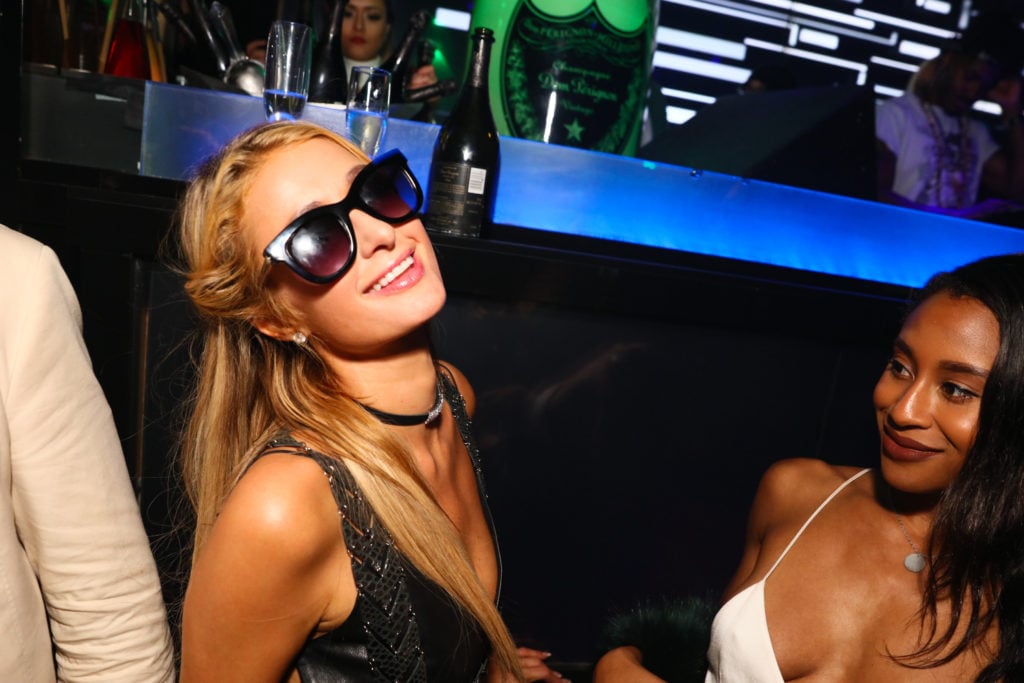
Paris Hilton celebrates Dom Pérignon’s ‘Transformation’ at the annual Art Basel Miami Beach Party, 2016. Photo courtesy of BFA // World Red Eye.
Crucially, I think this is why so many art industry denizens throw shade at art-fair week in Miami in December. No matter whether you’re exhibiting at Art Basel Miami Beach or another trade show there, Miami—in all its neon-lit, flesh-bared, 24-hour-party-people bombast—asserts itself.
Please don’t misunderstand me. There is great art and culture to be found in Miami and the beaches, and I have a soft spot for them that would take a book to fully explain.
But part of what I like about the destination is this: I don’t care how hard you try or how much money you spend while you’re there. You cannot assemble an art-industry itinerary in south Florida that Miami’s pure Miami-ness will not crash.
You will not escape the reality that pop culture and contemporary art are now groping one another with a ferocity normally reserved for long-distance couples about to be split up by another solo plane trip home.
You will not completely avoid the wannabes and grifters desperately pawing at art as a hoped-for lever to ratchet in social stardom, wealth, or both.
In short, you will not be able to escape the messy reality of where we are now in the arts—not the way that you can in Art Basel’s namesake city during its premier event, when Leo Castelli’s ghost seems almost within reach.
But the distance between these two events may be narrowing, however subtly.
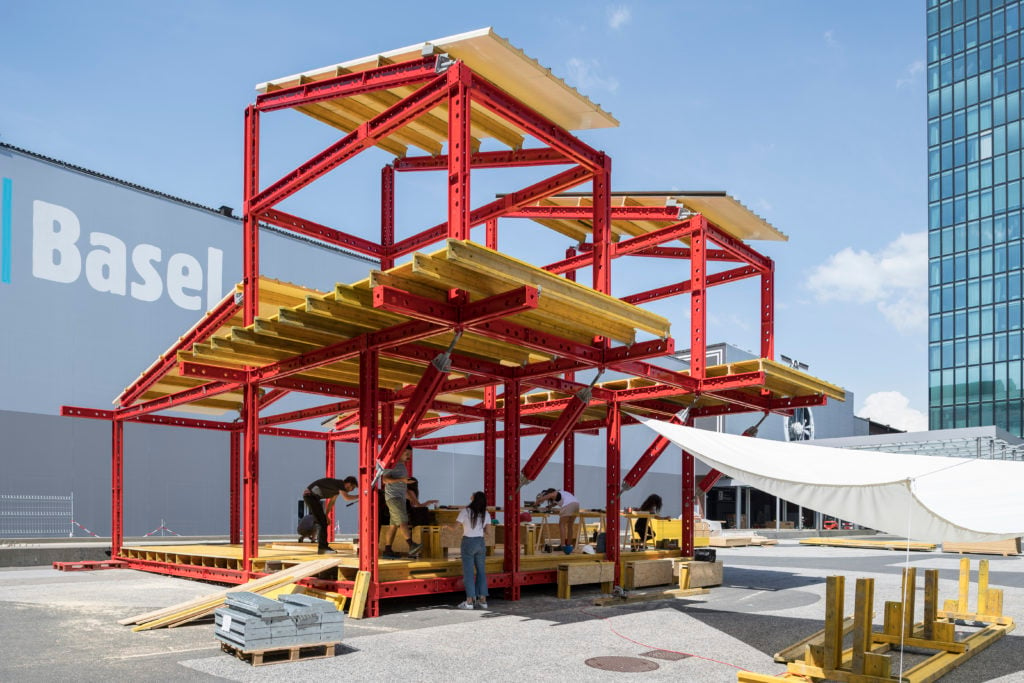
Installation view of Basilea (2018). Courtesy of Creative Time and Art Basel.
In talking to a few longtime collectors at the fair this year, I heard variations on the same theme: Despite the strong attendance, they saw fewer familiar faces at Art Basel than ever before.
There was a sense that the old guard—which, in many cases, isn’t even that old yet—was being buried in real time under the growing stack of COINs (Collectors Only In Name) dominating the industry, even at one of the last bastions of connoisseurship on the art fair calendar.
Similarly, I couldn’t help but notice that Basel in 2018 hardly appeared to be a grifter-free zone on the sell side, either. This was less an observation forged inside the fair than around its periphery, where I encountered various other events and personalities clearly more attracted by art-wealth than art.
Naming names now would blow this column out to an unacceptable length, but suffice it to say that the spirit of Leo Castelli was most definitely under siege from the example of Anna Delvey, particularly when it came to the startup ecosystem.
How deep will the latter contingent infiltrate the dome preserving Art Basel as a land out of time next year, and the year after that, and the year after that? It’s impossible to say.
Maybe the city’s modest size creates an organic firewall against the poseurs and charlatans, who simply won’t be able to find the hotel rooms and restaurant reservations they need to unfurl their tentacles.
Maybe the art industry can cultivate the taste levels and genuine interest of the newer collectors, turning them into a new generation of connoisseurs.
And maybe the true believers in the intangible values of art should just accept that operating in a complete bubble—no matter how sophisticated and gratifying—may not be totally healthy.
Or maybe the cracks visible at the edges of Art Basel 2018 are the beginning of the end for any hope of an art industry governed first and foremost by art.
Maybe these really are the last days for those of us who would scoff at, say, the notion that buying fractional ownership in a dead painter’s canvas that you will never see counts as “an experience of art” rather than a bald-faced (and misguided) cash grab.
Maybe everything really is going down.
All I know for sure is that, if everyone proceeds with business as usual, we’re trending further toward that last outcome than any of the others. I would almost never say that art should, or can, be completely independent of money. But if we want it to be about more than that, we need to shuttle ourselves from the moon colony back down to earth ASAP and start getting our hands dirty with the business of change.
Because Art Basel in Basel is different—an event where the modern business of art can still be massaged by extraordinary circumstances into the pleasing shape and tone of a lost era. And if we’re content to just live that experience for one week rather than make changes that account for the many ways in which the world has moved on since then, things are only going to get worse for art during the other 51 weeks a year.
That’s all for this week. ‘Til next time, remember: Artwork doesn’t exist without “work.”